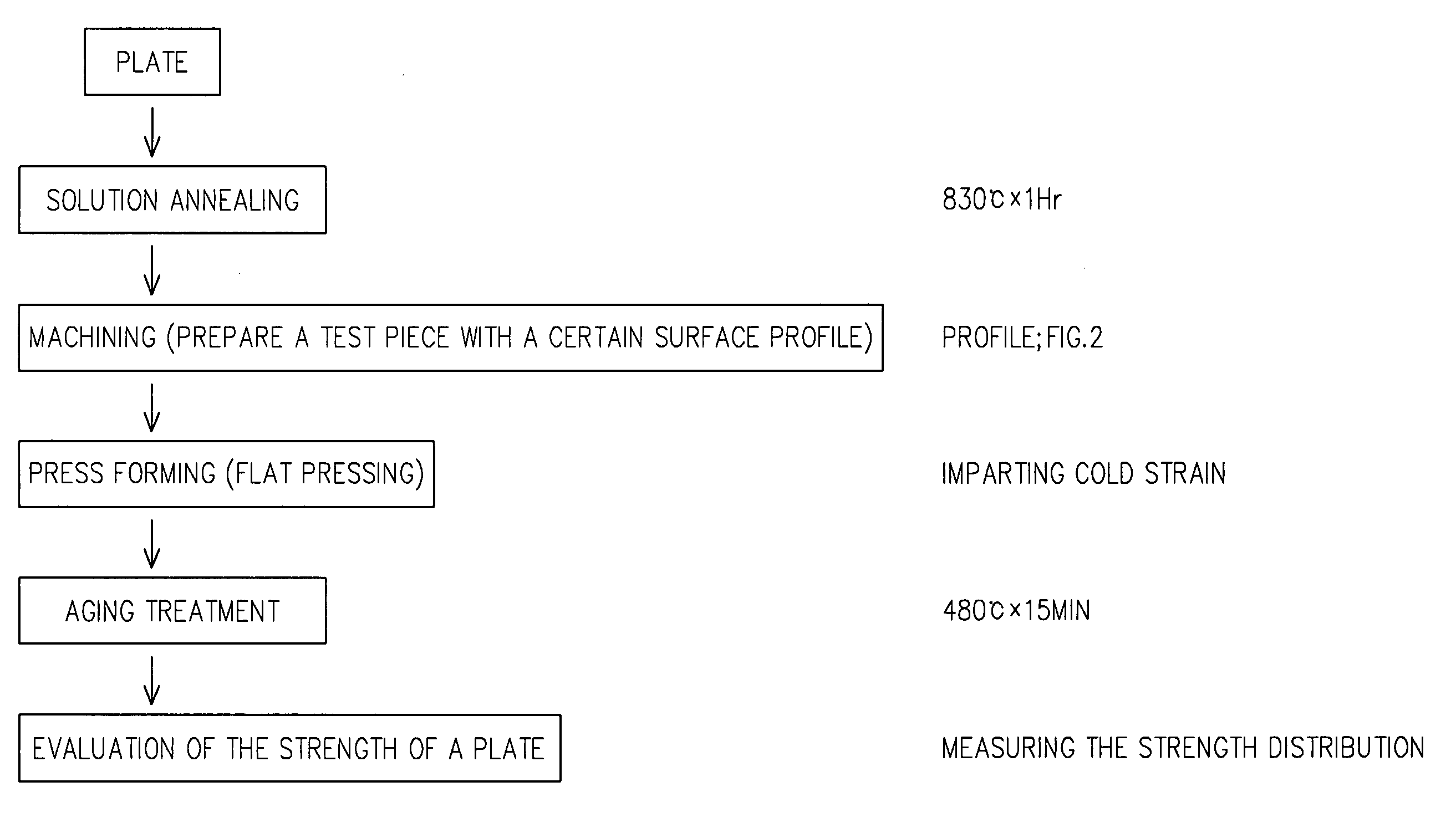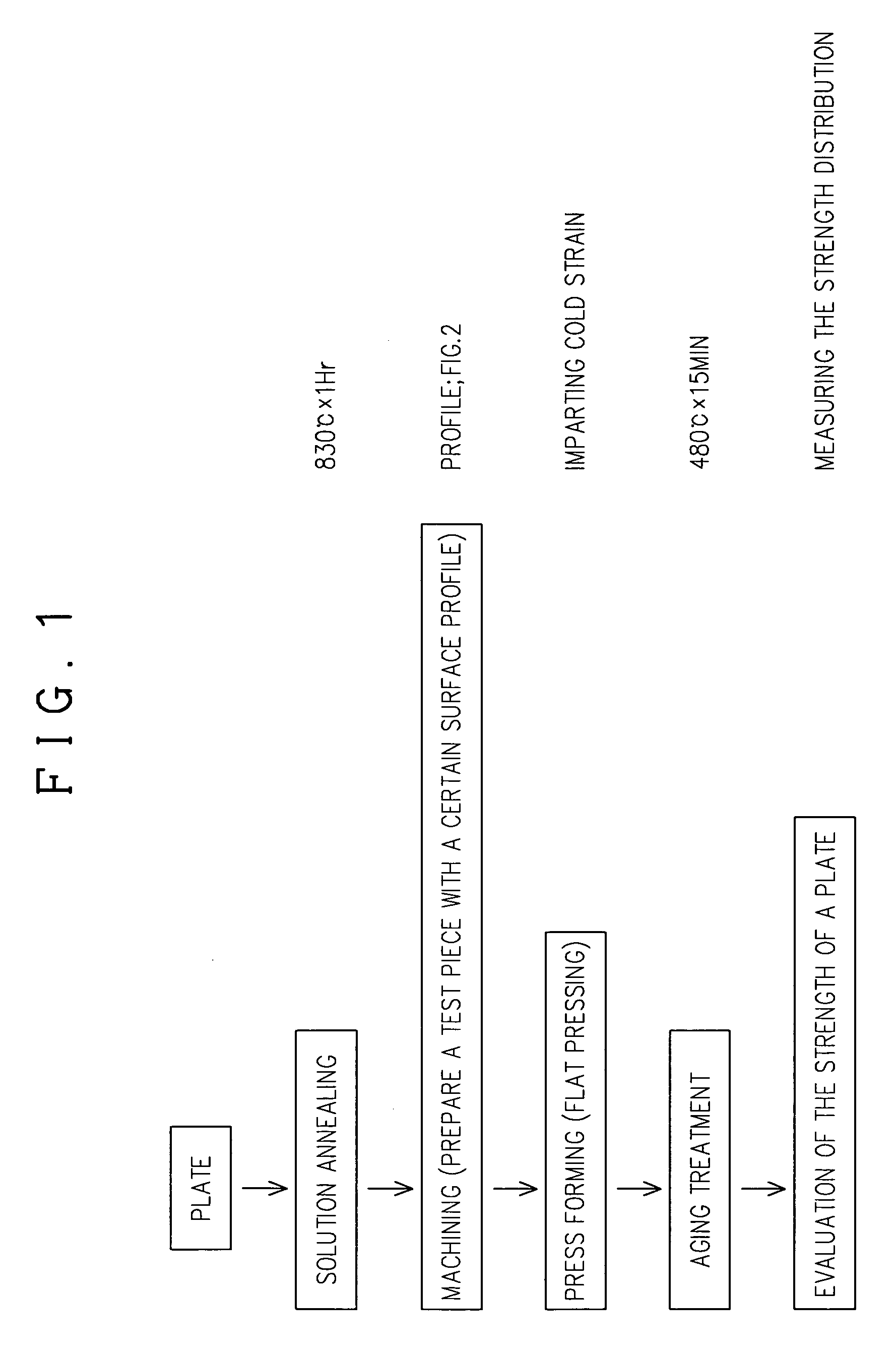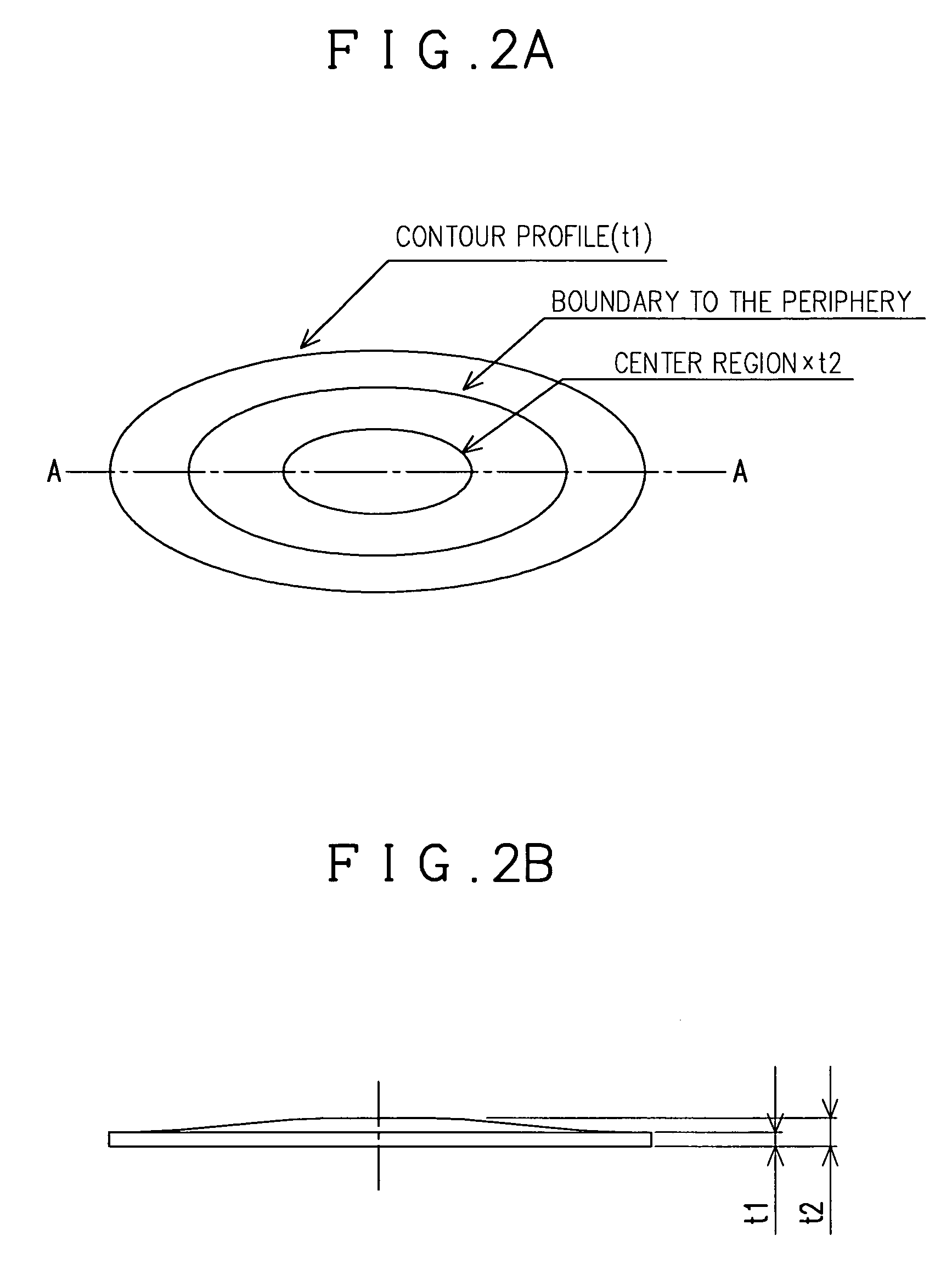Process for making a work piece from a beta-type titanium alloy material
a technology of beta-type titanium alloy and work piece, which is applied in the field of process for making work piece from beta-type titanium alloy material, can solve the problems of increased manufacturing cost, difficult to carry out induction hardening treatment, and unsuitable building induction hardening treatment, and achieves high hardness, sufficient hardness, and smooth surface quality.
- Summary
- Abstract
- Description
- Claims
- Application Information
AI Technical Summary
Benefits of technology
Problems solved by technology
Method used
Image
Examples
Embodiment Construction
[0024]Now, the description will be made for an embodiment of the present invention.
[0025]According to the present invention, a process is provided, in which a β-type titanium alloy material is subjected to cold working with various reduction rates across the surface thereof, and then aging treatment, thereby making a work piece composed of the β-type titanium alloy material with a desired hardness distribution.
[0026]A β-type titanium alloy material used in the present invention may have a varying composition. For example, it can be cited a β-type titanium alloy material having the following composition (wt. %): V 15–25, Al 2.5–5, Sn 0.5–4, O 0.12 or less, and Ti and inevitably contained impurities constitute the residue (as disclosed in Japanese Patent No. 2669004), or V 10–25, Al 2–5, Cr 2–5, Sn 2–4, O 0.25 or less, and Ti and inevitably contained impurities constitute the residue (as disclosed in Japanese Patent No. 2640415). Of these compositions, it is preferable to use the β-ty...
PUM
| Property | Measurement | Unit |
|---|---|---|
| temperature | aaaaa | aaaaa |
| thickness | aaaaa | aaaaa |
| size | aaaaa | aaaaa |
Abstract
Description
Claims
Application Information
 Login to View More
Login to View More - R&D
- Intellectual Property
- Life Sciences
- Materials
- Tech Scout
- Unparalleled Data Quality
- Higher Quality Content
- 60% Fewer Hallucinations
Browse by: Latest US Patents, China's latest patents, Technical Efficacy Thesaurus, Application Domain, Technology Topic, Popular Technical Reports.
© 2025 PatSnap. All rights reserved.Legal|Privacy policy|Modern Slavery Act Transparency Statement|Sitemap|About US| Contact US: help@patsnap.com



